1
California
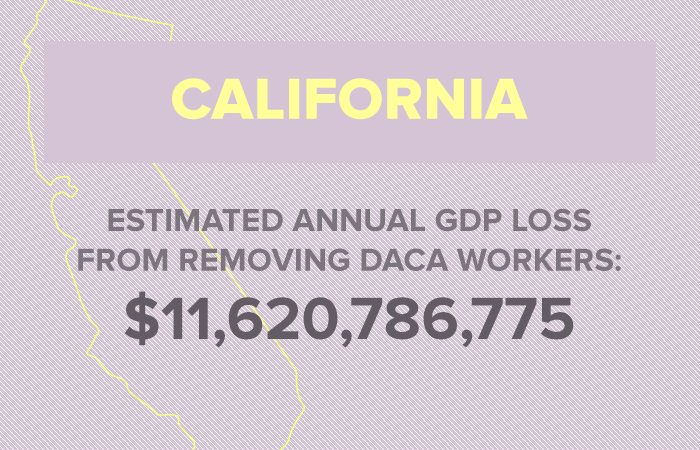
Number of DACA recipients: 222,795
Estimated Number of DACA Workers: 193,832

Art by Alan López for Remezcla
Nearly 800,000 young undocumented immigrants’ lives changed on August 15, 2012 when the Deferred Action for Childhood Arrivals (DACA) program began taking applications. The Barack Obama-enacted program allowed undocumented immigrants brought to the US at a young age to come out of the shadows so they could work, attend school, and live their lives without fear of deportation. Five years later, the program faces its biggest threat. Recently, 10 attorneys general called on President Donald Trump to rescind the program. If Trump doesn’t meet their demands by September 5, the attorneys general – representing Alabama, Arkansas, Idaho, Kansas, Louisiana, Nebraska, Tennessee, Texas, South Carolina, and West Virginia – will sue the government to try to put an end to the program, which would adversely affect the beneficiaries, and the rest of the country.
DACA began after the Dream (Development, Relief, and Education for Alien Minors) Act failed to pass in Congress several times. Through the hard work of activists and politicians who championed for protections for the undocumented community, Obama gave life to the program through an executive action. Because Obama didn’t get Congressional support, DACA remains in a precarious state. Trump could end the program with a single memo. If not, it may head to court, where the same judge who halted DAPA, a similar initiative aimed at protecting the parents of US citizens and lawful permanent residents, may dismantle DACA.
With so much on the line and so many families at risk of being broken up, United We Dream and CASA have teamed up for a rally and march today outside the White House to demand that Trump protect both DACA and the Temporary Protection Status (TPS) programs. (Learn more here.) Others like Center for American Progress (CAP) – a nonpartisan policy institute – are looking at the far-reaching effects of ending DACA. The group found that ending the program would wreak havoc on the economies of so many states.
“Using data from two Center for American Progress publications — a report that estimates the gross domestic product (GDP) declines that would accompany removing all unauthorized workers from the country and a survey that estimates the share of DACA recipients who are employed – CAP estimates that ending DACA would result in a loss of $460.3 billion from the national GDP over the next decade,” the institute notes. “Ending DACA would remove an estimated 685,000 workers from the nation’s economy.”
CAP further broke down the estimated annual GDP loss for each state. And through its data, we found the 10 states that would most feel the effects.

Number of DACA recipients: 222,795
Estimated Number of DACA Workers: 193,832

Number of DACA recipients: 124,300
Estimated Number of DACA Workers: 108,141
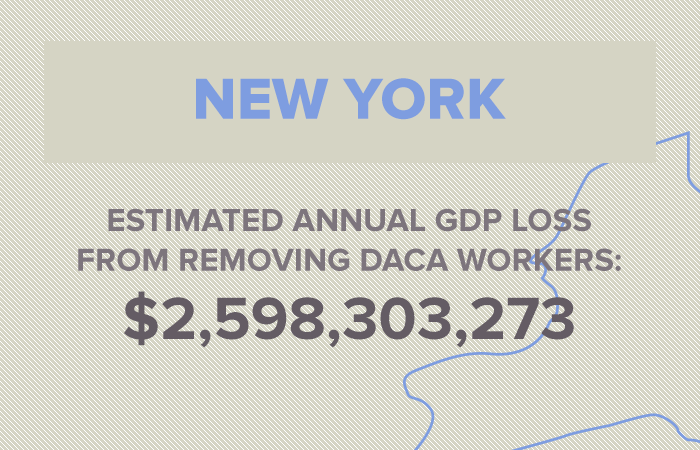
Number of DACA recipients: 41,970
Estimated Number of DACA Workers: 36,514
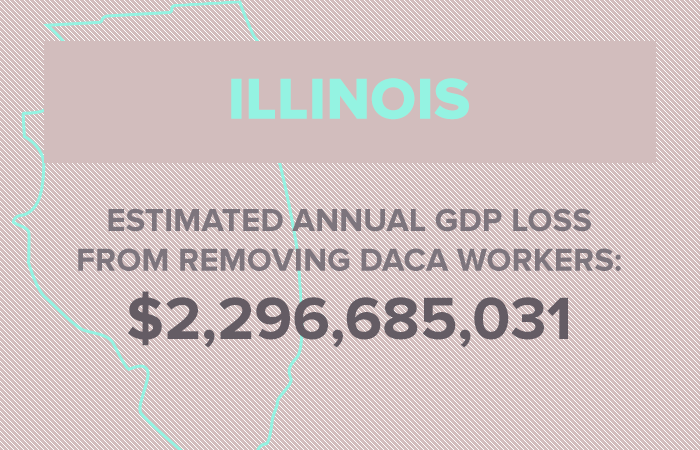
Number of DACA recipients: 42,376
Estimated Number of DACA Workers: 36,867
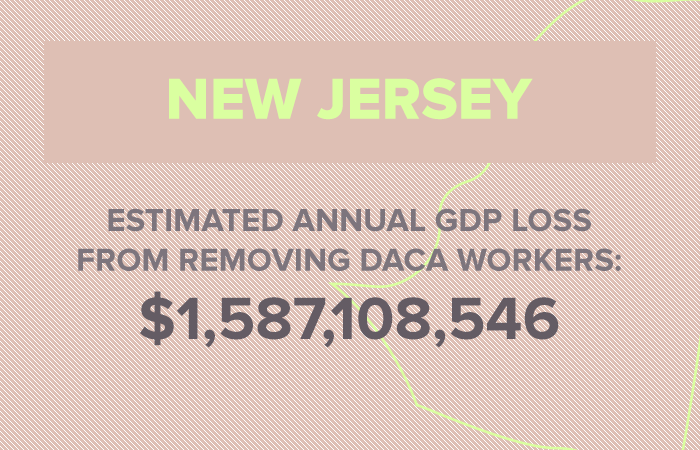
Number of DACA recipients: 22,024
Estimated Number of DACA Workers: 19,161

Number of DACA recipients: 32,795
Estimated Number of DACA Workers: 28,532
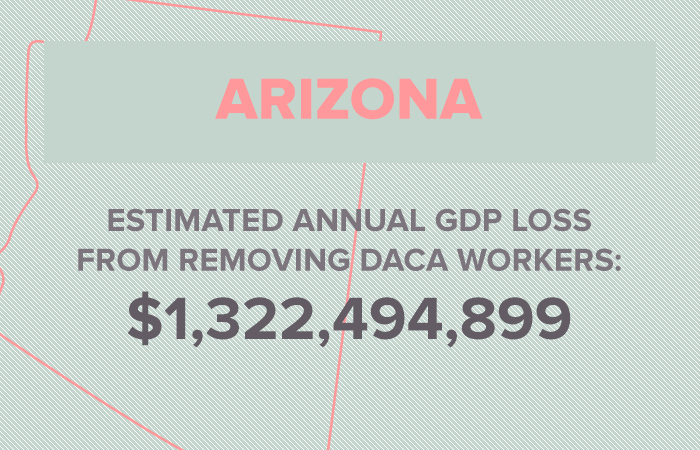
Number of DACA recipients: 27,865
Estimated Number of DACA workers: 24,243

Number of DACA recipients: 27,385
Estimated Number of DACA workers: 23,825
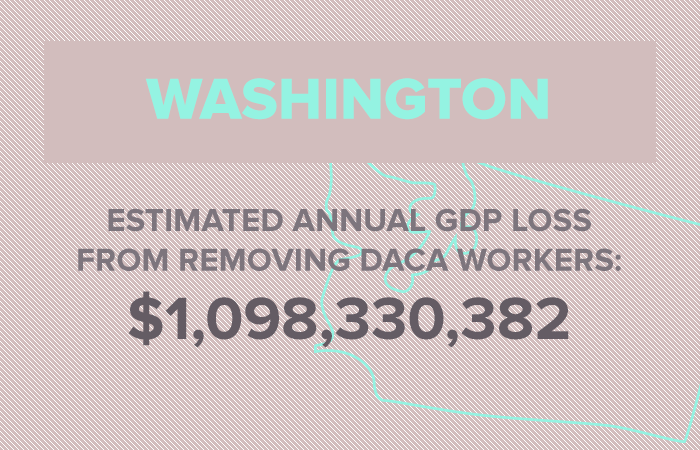
Number of DACA recipients: 17,843
Estimated Number of DACA workers: 15,523
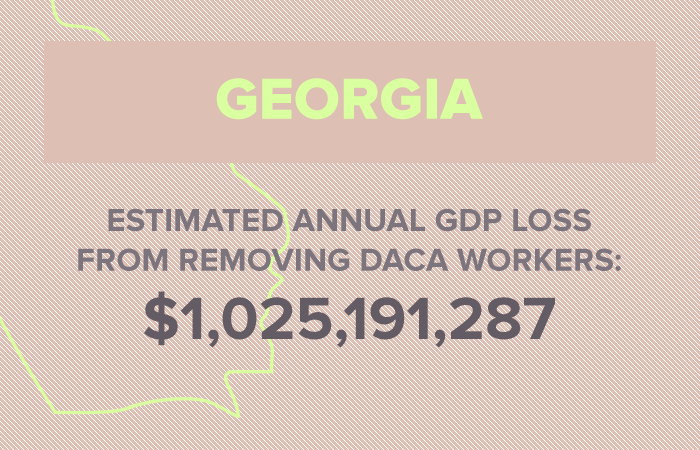
Number of DACA recipients: 24,135
Estimated Number of DACA Workers: 20,997